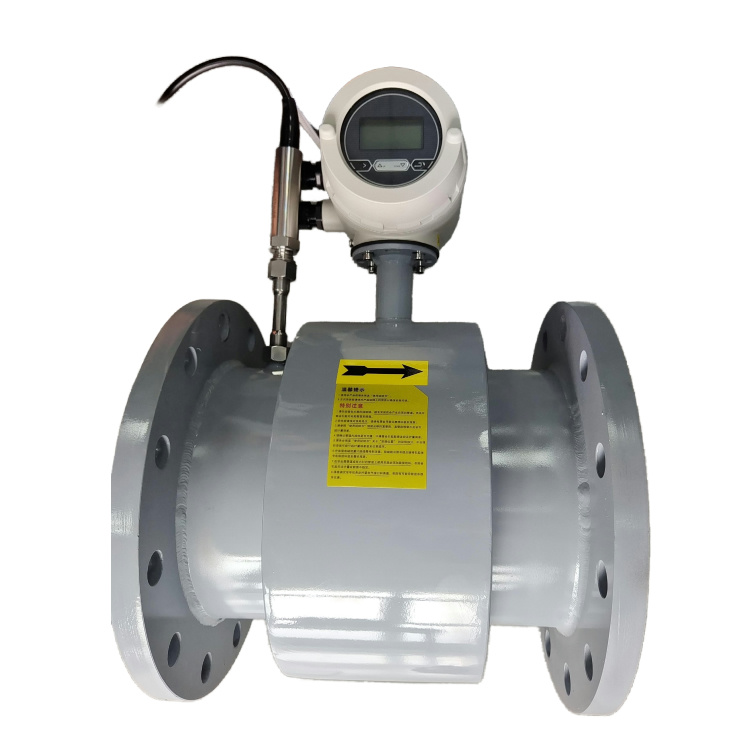Solutions-Flow Transmitter
Troubleshooting Methods for Electromagnetic Flowmeters
Troubleshooting Methods for Electromagnetic Flowmeters
Electromagnetic flowmeters, as precision flow measurement instruments, are widely used in actual industrial production due to their excellent performance in measuring conductive liquids. However, during daily flow measurement operations, various factors can lead to common faults such as a blank or yellow-screened display on the meter head, unstable or fluctuating readings, and inaccurate measurements. Now, let's delve into how to handle these faults once they are identified.

Blank Display or Yellow Screen on Meter Head After Power-On
1. Power cycle the device: Turn off the power and restart it.
2. Isolate the power supply: Remove other load devices from the power source and power the flowmeter exclusively.
3. Test with another meter head: Replace the current flowmeter head with another one on-site to check if the power supply is functioning properly.
4. Replace the fuse: If the fuse is blown, replace it with a new one.
5. Return for factory repair: If the fault persists after performing the above steps, return the device to the factory for repair.
No Flow Display Despite Flow Present
1. Check "Reverse Output Allow" setting: If it is set to "Prohibit," change it to "Allow."
2. Adjust the empty pipe alarm threshold: If the actual value exceeds the threshold, increase the threshold.
3. Disable small signal cutoff: Turn off the small signal cutoff function.
4. Clean electrode surfaces if the empty pipe alarm actual value is excessively high and the medium is conductive: Measure electrode continuity after cleaning.
5. Replace with a smaller-diameter flowmeter for field diameter reduction: If the flow velocity is too low, consider replacing the current flowmeter with one of a smaller diameter.
Unstable or Fluctuating Readings
1. Add a grounding ring for non-metallic pipelines: This helps to stabilize the readings.
2. Check ground wire continuity for positive and negative fluctuations: If the ground wire is disconnected, reconnect it at the flange grounding screw.
3. Check SYS (System) for insulation or wiring issues: If the excitation is not insulated or the excitation wire is broken, attempt single-coil operation. For split-type flowmeters, first inspect the junction box. If the fault persists, return the device to the factory for repair.
4. Install air release valves before and after the instrument if the installation location is at the highest point and air bubbles are present in the pipeline: This helps to eliminate air pockets that may affect readings.
5. Clean electrodes if the empty pipe alarm threshold is too high: This ensures accurate measurements.

Inaccurate Readings
4-20mA Output Mismatch with Meter Head Display
1. Test the current output at the meter head terminal using a multimeter: Use the formula (I-4)/16*Q to verify if the calculation is correct.
2. Check if the upper range limit matches the nameplate specification: Ensure the flowmeter is calibrated correctly.
3. Investigate interference around the 4-20mA output line: Identify and mitigate any sources of interference.
Pulse Output Mismatch with Meter Head Display
1. Verify if the pulse equivalent matches the customer's design specifications: Ensure consistency in pulse output settings.
485 Communication Mismatch
1. Send the communication protocol: Provide the customer with the correct communication protocol.
2. Check the communication address in the meter head: Ensure the address is set correctly.
3. Provide the customer with dedicated testing software: This helps in diagnosing and resolving communication issues.
No Output
No Current, Pulse, or Output
1. Disconnect the load and measure current and voltage at the output terminal using a multimeter: If no output is detected, replace the meter head. If output is present, inspect the remote transmission line.
No GPRS Communication
1. Make a phone call near the meter to check for cellular signal: Ensure the GPRS module has a signal.
2. Check historical data on the platform to determine if the battery is dead: Replace the battery if necessary.
3. Verify that the meter head parameters are set correctly (IP address, GPRS connection mode, communication protocol, sleep/wake settings, server port number): Ensure all parameters are configured accurately.
Non-Zero Readings When No Flow Is Present
1. Increase the small signal cutoff threshold: This helps to eliminate false readings caused by minor electrical noise.
2. Add a metal grounding ring before the instrument if the pipeline medium is electrically charged: This grounds any stray electrical charges.
3. Enable the empty pipe alarm if it is not already on: This provides an alert when no flow is detected.
4. Install an iron enclosure around the instrument if there are strong magnetic fields that cannot be removed: This shields the instrument from external magnetic interference.
If you're interested in our electromagnetic flow meters, you can click to watch this video:
https://www.youtube.com/shorts/Zpx3Y4dyCIA
RELATED NEWS
- Technical Introduction of Reverse Flushing Flow Meter 2025-06-12
- Liquid Level Switch, Level Meter And Liquid Level Transmitter 2025-05-22
- Understanding the Basics of Groundwater Quality Monitoring Data 2025-04-15
- Capacitive Level Gauges vs. Self-Powered Level Gauges 2025-03-19
- Customer Case Study:Chained Temperature Transmitters 2025-03-18
CATEGORIES
LATEST NEWS
CONTACT US
Contact:Roxy Deng
Phone:+8617794001501
Tel:+8617794001501
Email:527924493@qq.com
Add:Weibin District, Baoji, Shaanxi Province, China
 Roxy Deng
Roxy Deng Roxy Deng
Roxy Deng